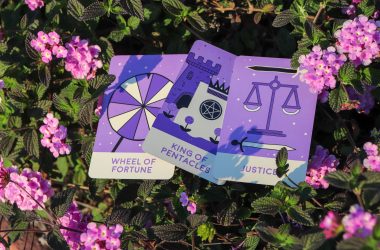Two weeks ago, news broke that the 2009 murder scene of a 14-year-old boy could still be found on Google Maps.
Since the development of Google Earth in 2005, satellite images have made it possible for anyone to zoom in on a location with only a few taps on a keyboard.
Whether it’s planning a trip across Europe or viewing the residential areas of overseas relatives, Google Earth has made it possible to find almost any address with satellite imagery.
To date, Google Earth has been downloaded more than 1 billion times.
With such accessible and accurate satellite imagery, individual privacy is at stake.
Google Maps, generated by the same software as Google Earth, provides users with traffic reports, residential maps and satellite imagery that is supposed to be no more than three years old.
Kevin Barrera’s parents were horrified to see the that their son’s murder scene was still publicly accessible on Google Maps more than four years after the fact.
Barrera was shot and killed next to a rail line in Richmond, Calif. The satellite picture shows what appears to be Barrera’s lifeless body on the ground with a number of investigators surrounding the scene.
This graphic murder took place on Aug. 15, 2009. Google Maps should have updated its images by now.
The issue may not lie in whether Google Maps should be updated more periodically, though. The bigger controversy addresses how much information should actually be made available to the public.
Programs such as Google Earth and Google Maps have made living everyday life much easier, from acquiring directions at the click of a button to killing time by seeing what Russia looks like from a bird’s eye view.
Despite their popularity, both Google satellite programs have been tarnished recently.
Google Earth has run into many problems with some overseas governments, including China, India and South Korea. Iran and Sudan are both completely blocked off from Google Earth.
Rumors have also circulated throughout the past five years that Google Earth has aided in terrorism activities and robberies in the U.S. and abroad.
When the Barrera family vocalized their concerns about the public murder scene to a local news station, the vice president of Google Maps called the Barreras family and apologized. He assured the family that the image would be removed.
More than a week went by, though, and the murder scene in Richmond was still available on Google Maps.
Google’s satellite technologies do help the public good, however.
On Wednesday, the Los Angeles Times reported that Canadian researchers used Google Earth to effectively debunk a statistical report that said fish harvest was six times lower than it actually was.
With Google Earth’s and Map’s fast results and minor glitches, we overlook the fact that satellites are scanning our backyards for the world to see.
How much of your life do you want the world to see?
Joann Row is a senior journalism major and an assistant news editor at the Daily 49er.



